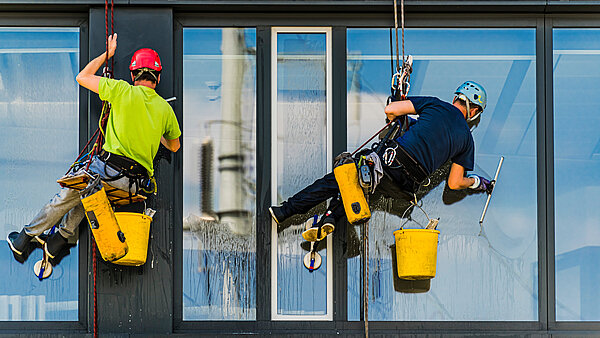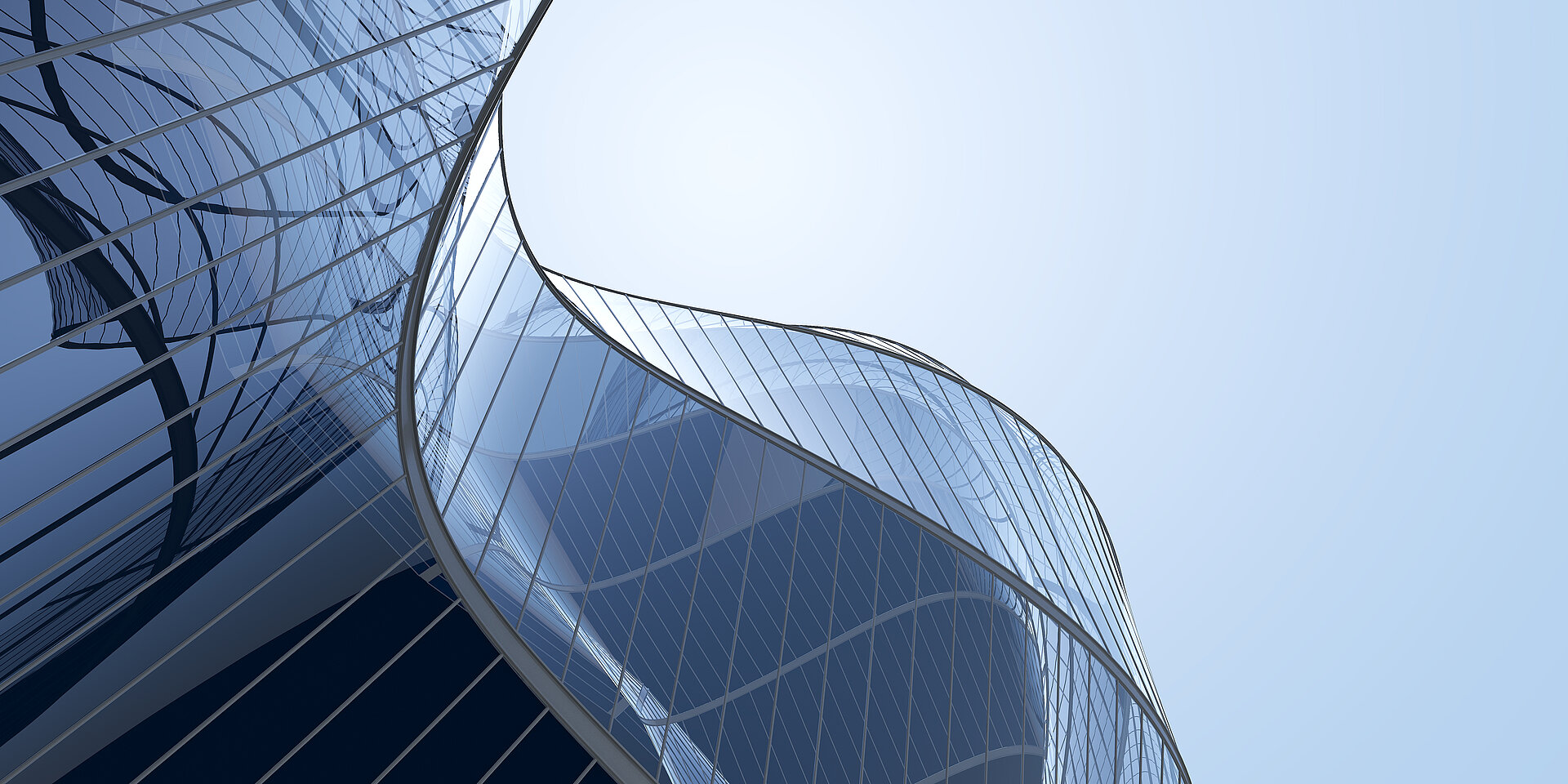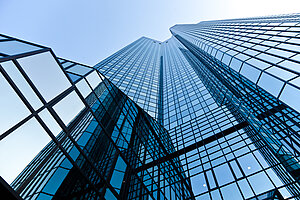Strictly speaking, there is a specialist for every type of risk, e.g. for chemical or electrical risk. Occupational safety specialists must assess these risks in a company, for example whether dangerous radiation is emitted by one of the office appliances. On the other hand, safety concepts for risks of falling from facades, on roofs, and also in industry have been our special field since 2001. Facade safety is an especially exciting area, because there are an incredible number of different facade types, each with its very own requirements. And understandably, this is not just a matter of safety, but also of aesthetics, because ideally the safety system ought to be invisible and should not impair the beauty of the building. In this blog you will discover what a risk or danger is, and how the individual steps of the risk assessment look.
What is danger, what is risk?
According to occupational health and safety regulations in Germany, Austria and Switzerland, employers are responsible for the safety of their employees. Those responsible should also know the difference between danger and risk, in order to be able to develop sustainable safety concepts without suffering the risk of the illusion of safety:
- Danger: is the real, above-average likelihood that an industrial accident occurs
- Risk: is the possibility of an acute consequence that is harmful to health, because of insufficient safety precautions
A risk thus turns into a danger if it is not recognised and/or restricted. The purpose of facade safety is to minimise risks, and thus to protect against dangers, e.g. from a life-threatening and costly fall accident. The necessary guidance for this is provided by the generally recognised risk assessment for facade safety, which consists of 7 steps.
7 steps of the risk assessment
- Record the work areas & activities:
In the first meeting with experts in fall protection systems, the risk area and the activities which take place there are determined. Frequency is also important here, i.e. how often work takes place within the risk zones. For example, do the room-height windows of a glass facade have to be cleaned regularly, or is facade safety required principally in the course of the annual service and repair inspection?
- Determine the risks:
During an onsite inspection of the areas to be protected, the individual risks are determined in order that later on the appropriate all-round protection is ensured at all times for the users. After this, it is already possible to plan a safety system such as the TAURUS rail system, with or without the process of rope access technology.
- Assess the risks:
In the next step the risks in this area are assessed exactly, in order to create a comprehensive safety concept. Here the experts analyse which safety system is to be implemented to secure the users in their respective activities.
- Specify the protective measures:
After the detailed assessment of all risks present, it is a matter of selecting and specifying the appropriate protective measures. In addition to technical measures using high-quality products, these also include organisational and personal measures. This is where the (S)TOP application principle applies, the sequence of which is decisive for comprehensive all-round protection.
- Implement the measures:
The planned protective measures for optimum facade safety are implemented in the next step. After a comprehensive consultation, all products are ordered, and a certified installation company is engaged. For INNOTECH customers, the customer adviser is available as a contact partner throughout the whole implementation process. Once the fall protection system has been installed, there is comprehensive training for those responsible and for the subsequent users. This training clarifies questions, for example, about how and where the fall arrest device must be attached and/or how the safety harness is to be worn correctly. Certified training in organisational and personal measures and rescue training are also highly recommended.
- Test the effectiveness:
During and after installation of the facade safety system, it is necessary to test its effectiveness. Despite precise planning and precautions, the tasks of the responsible fitter include inspection of the substructure one last time at every intended anchor point and, in an emergency, to consult with the responsible specialist expert for fall protection.
- Document & keep updated:
The final step of the risk assessment of facade safety systems is its documentation by means of photos and brief descriptions. This is particularly efficient and convenient when the digital solution INNO|doc, is used. Thanks to pre-created checklists, this enables clean and complete documentation. This is a legal requirement during the official annual inspection, and it forms the basis for the best possible onsite safety for the whole workforce.
Summary: Risk assessment for facade safety
“Safety first” is the motto which must apply under all circumstances when securing facades. For every type of risk, there are experts who have specialised in one specific area and who are able to develop sustainable safety concepts, thanks to many years of experience. We have created a name for ourselves in terms of fall risk solutions, and we look forward to providing you with well-founded advice, certified products, and to supporting you in your initiative with a wealth of learning from previous projects.
But, of course, there also has to be time for browsing, and that’s why in our free White Paper you will find much useful information, real tips from the experts, and fascinating use cases relating to fall protection systems on facades. Download this White Paper now.



















